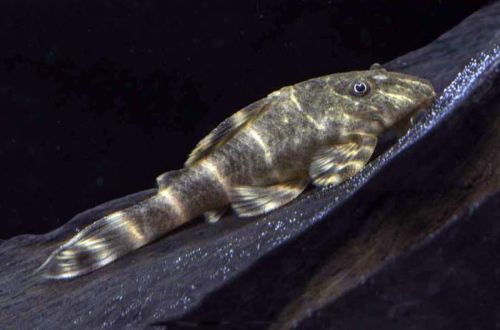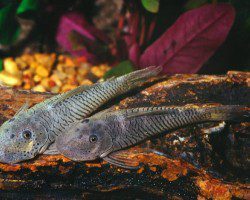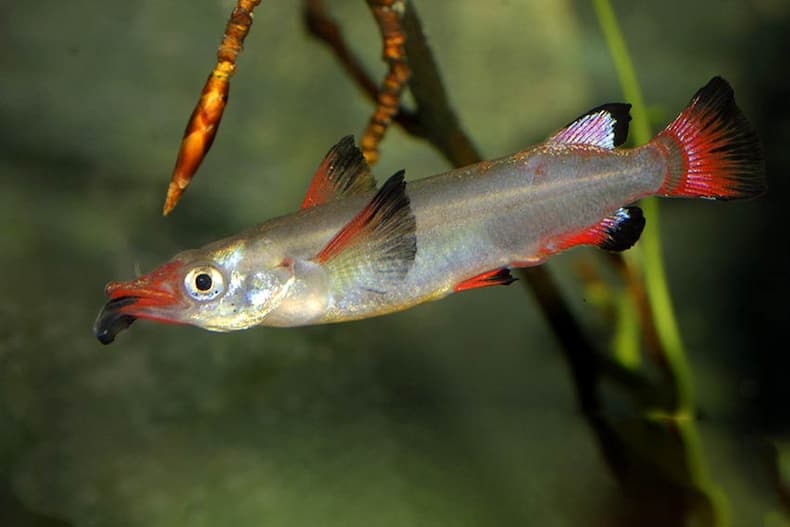
Half-snout red-black
The red-black half-snout, scientific name Nomorhamphus liemi (subspecies snijdersi), belongs to the family Zenarchopteridae (Half-snouts). Small predatory fish. Considered difficult to keep for beginner aquarists due to the need to maintain very high water quality, specific dietary requirements, and difficult intra-species relationships.

Contents
Habitat
Originally from the Indonesian island of Celebes (Sulawesi) in Southeast Asia. Inhabits fast mountain streams on the southwestern tip of the island, flowing down from the Maros highlands.
Brief information:
- The volume of the aquarium – from 130 liters.
- Temperature – 22-28°C
- Value pH — 6.5–7.0
- Water hardness – 4–18 dGH
- Substrate type – any
- Lighting – moderate
- Brackish water – no
- Water movement – moderate or strong
- The size of the fish is 7–12 cm.
- Nutrition – fresh or live food
- Temperament – conditionally peaceful
- Keeping in a group with one male and 3–4 females
Description
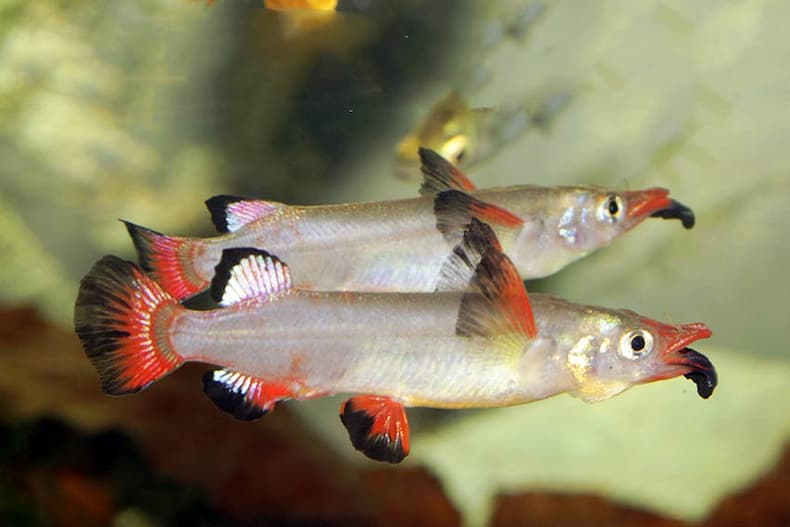
The red-black half-snout is a variety of Nomorhamphus Lim (Nomorhamphus liemi), its full scientific name would be Nomorhamphus liemi snijdersi. This subspecies is characterized by red-black coloration of non-paired fins and tail. This flowering also extends to the jaws of the fish. In the aquarium trade, another subspecies is known with the additional prefix “liemi” in the scientific name, which is distinguished by a predominantly black color of the fins.
In nature, there are several varieties in which intermediate states can be found in the color of the fins and tail. Thus, such a division into two subspecies is conditional.
It looks like a miniature pike. The fish has an elongated body, the dorsal and anal fins are shifted back closer to the tail. The head is pointed with long jaws, and the upper one is somewhat shorter than the lower one. This feature is characteristic of all members of the family, which is called Half-faced. A unique feature of this species is the fleshy, recurved hook on the lower jaw. Its purpose is unknown. The body coloration is monochromatic without a pattern of silvery color with pink hues.
Males reach a length of 7 cm, females are noticeably larger – up to 12 cm.
Food
A small predator, in nature it feeds on invertebrates (insects, worms, crustaceans, etc.) and tiny fish. In a home aquarium, the diet should be similar. Feed in the upper layers of the water. The basis of the diet can be live or fresh earthworms, mosquito larvae, large bloodworms, flies and other similar foods. Can be accustomed to dry products in the form of granules with a high protein content.
Maintenance and care, arrangement of the aquarium
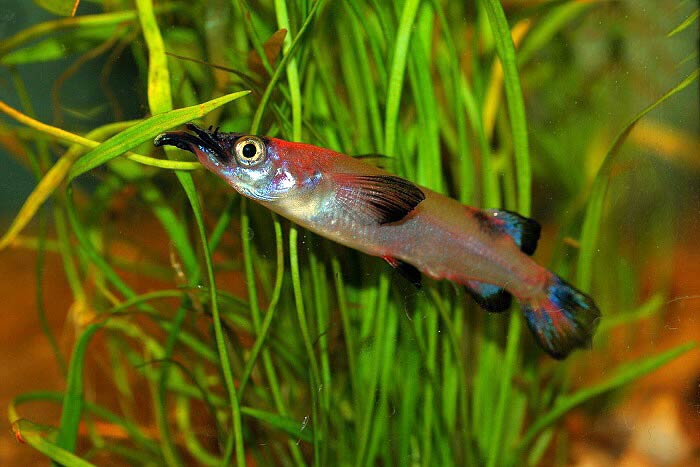
The optimal size of the aquarium for a group of 4-5 individuals starts from 130-150 liters. The design is not of great importance if the following conditions are met – the presence of free areas for swimming in the upper layer of water and local shelters in the form of thickets of plants. Do not allow the aquarium to overgrow.
Being a native of flowing water bodies, the Red-Black Half-Snout is sensitive to water quality. To prevent excessive accumulation of organic waste, uneaten food residues, excrement, fallen plant fragments and other debris should be siphoned weekly, and part of the water (25–30% of the volume) should be replaced with fresh water. It will not be superfluous to have a productive filtration system from internal filters, which, in addition to its main function, will allow you to create a current, simulating the flows of mountain rivers in their natural habitat.
Behavior and Compatibility
Males are aggressive towards each other and enter into fierce fights, but are peacefully disposed towards females and other species. In a small aquarium, it is recommended to keep only one male in the company of 3-4 females. As neighbors in the aquarium, it is worth considering fish that live in the water column or near the bottom, for example, the Sulawesi Rainbow, living with a red-black half-snout in the same area, Corydoras catfish and others.
Breeding / breeding
This species has an intrauterine way of carrying eggs, fully formed fry are born into the world, and each can reach 2.5 cm in length! Females may spawn throughout the year every 4–6 weeks. The normal course of pregnancy and the appearance of healthy offspring is possible only with a balanced diet. The daily diet should contain high protein foods. Parental instincts are not developed, adult fish, on occasion, will certainly eat their own fry. To save the brood, it should be timely relocated to a separate tank. From birth, they can eat adult food, only small, for example, daphnia, brine shrimp, fruit flies, etc.
Fish diseases
In favorable conditions, cases of the disease are rare. The risks of disease manifestation are increased in an unmanaged tank with poor water, malnutrition or when unsuitable food is supplied, and in contact with other sick fish. Read more about symptoms and treatments in the Aquarium Fish Diseases section.




